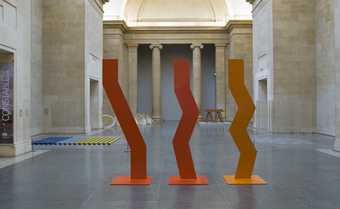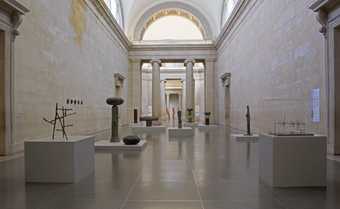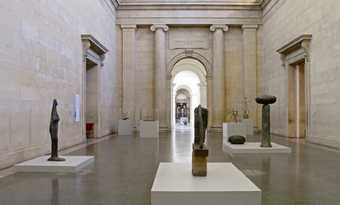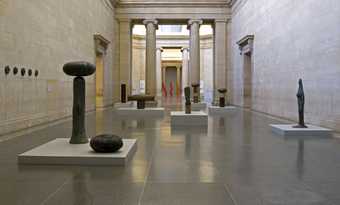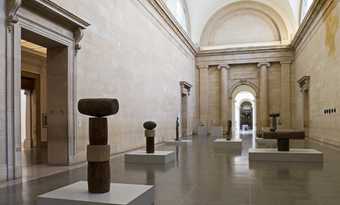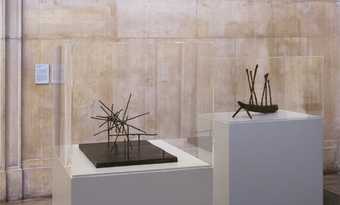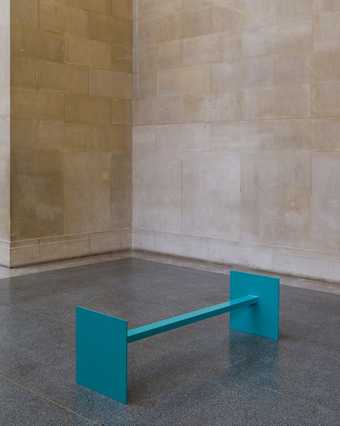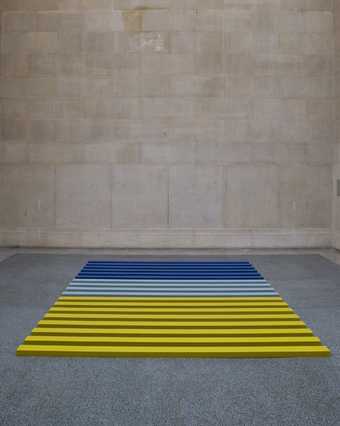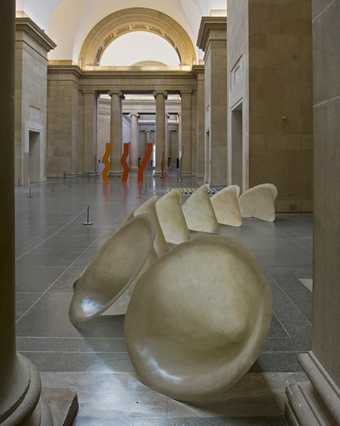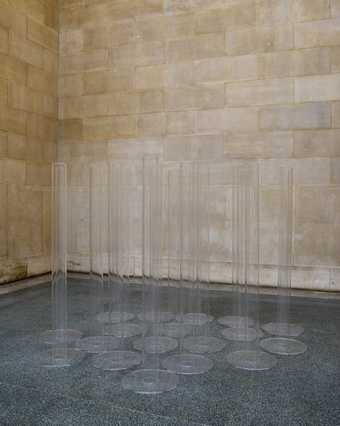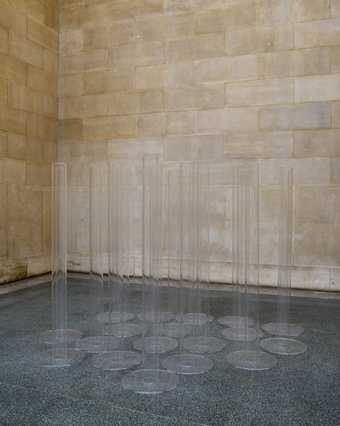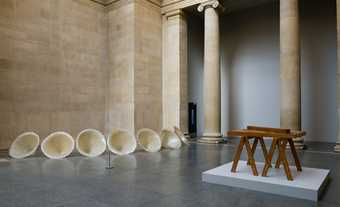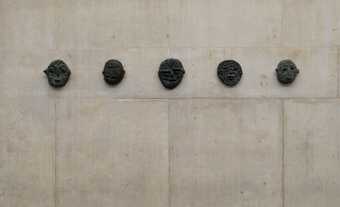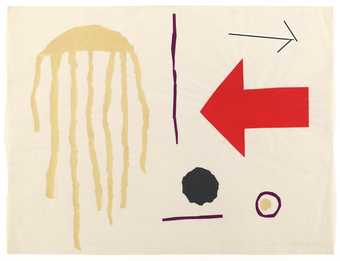William Turnbull is one of the most influential modern British sculptors. The work on display range from examples of Turnbull’s earliest works, made in Paris shortly after the war, to some of his most recent. Turnbull has worked in a variety of materials, including plaster, bronze, wood, steel and plastic. One of his most abiding concerns is with the totemic and many sculptures show his fascination in the cultures of ancient Greece, West Africa and South-East Asia. His work can also be playful, however, brightly coloured or even interactive. Everything he makes has an aesthetic and intellectual elegance and involves the exploration of the fundamentals of sculpture itself.
The earliest works shown here, made in Paris in the late 1940s, reflect Turnbull’s contact with artist Alberto Giacometti and his fascination with Existentialist philosophy. The sculptures from this period experiment with ideas of variability, games and they sometimes possess a sense of the ridiculous. Turnbull’s interest in the different ways of experiencing the world was influenced by his activity as a pilot and swimmer.
Later, Turnbull felt his linear sculptures were too theoretical. Beginning with a series of Masks 1953, he developed work concerned primarily with surface. He pushed found objects into clay moulds so that there was an element of chance in the final image. Randomness is an abiding characteristic of Turnbull’s sculpture and can be seen in works like Spring Totem 1962–3, in which different elements are arranged in a variety of ways.

